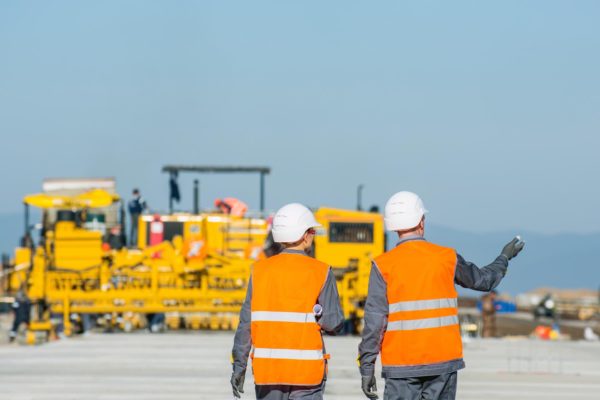The Interdisciplinary Approaches in the Geotechnical Industry: Linking the Gap In Between Engineering, Geology, and Environmental Science for Optimal Task Results
The assimilation of engineering, geology, and ecological scientific research within the geotechnical market is not merely helpful; it is important for accomplishing ideal job end results. What approaches might emerge to promote this important collaboration and boost the efficacy of geotechnical practices?
Relevance of Interdisciplinary Partnership
The relevance of interdisciplinary partnership in the geotechnical industry can not be overemphasized. Efficient geotechnical projects need the assimilation of diverse expertise from numerous areas, including engineering, geology, and ecological science. This collaboration makes sure that all aspects of a job are taken into consideration, bring about comprehensive solutions that address complicated difficulties.
Interdisciplinary cooperation cultivates advancement by making it possible for specialists to share insights and methods that might not appear when operating in isolation (consulting engineer). By leveraging the strengths of multiple self-controls, teams can determine possible risks, optimize design procedures, and boost the sustainability of geotechnical tasks. Such partnership advertises an all natural understanding of site-specific conditions, which is vital for precise assessment and decision-making.
The complexity of geotechnical jobs requires a collaborated strategy to analytical. When engineers, rock hounds, and ecological scientists collaborate, they can create a cohesive approach that straightens technological demands with ecological factors to consider and governing compliance. This harmony not just boosts job outcomes however additionally adds to the long-lasting resilience of infrastructure. Ultimately, interdisciplinary cooperation is essential for progressing finest methods and achieving quality in the geotechnical industry.
Secret Duties of Each Discipline
Cooperation among numerous disciplines is not simply valuable; it is vital for the effective implementation of geotechnical projects. Each self-control-- engineering, geology, and environmental scientific research-- plays an unique yet interconnected duty that adds to predict efficiency and sustainability.
Geotechnical engineers are mainly in charge of making foundations and making certain structural integrity. They analyze soil and rock properties to examine load-bearing capacities, providing vital information for risk-free building and construction practices. Their experience allows the formulation of ingenious services to complicated challenges.

Environmental researchers analyze the possible influences of building on environments and water sources. They carry out environmental evaluations and establish mitigation techniques to minimize unfavorable effects. By incorporating environmental considerations, they ensure compliance with policies and advertise sustainability throughout the job lifecycle.
Study of Effective Combination
Successful integration of geotechnical techniques can be exemplified through various study that highlight the effectiveness of teamwork in dealing with complex design difficulties. One noteworthy instance is the building and construction of the Hong Kong-- Zhuhai-- Macau Bridge, where a collective approach including geotechnical design, geology, and ecological scientific research was essential. Geologists and engineers functioned in unison to evaluate the seabed conditions and enhance the foundation style, guaranteeing stability and reducing ecological impact.
An additional impactful situation is the enhancement of incline stability in the San Francisco Bay Area, where an interdisciplinary group incorporated geotechnical evaluation with environmental evaluations. By incorporating hydrological studies and geological surveys, the group efficiently recognized prospective landslide threats and carried out reliable mitigation actions, improving safety and security and sustainability.
Furthermore, the redevelopment of Brownfield sites commonly calls for a multidisciplinary method. In one situation in Chicago, cooperation amongst geotechnical engineers, environmental researchers, and metropolitan organizers resulted in the successful removal of infected dirt, enabling the safe improvement of the website right into a neighborhood park. These case research studies show that interdisciplinary cooperation not only addresses technical obstacles yet also fosters innovative remedies that profit both tasks and areas.
Obstacles in Multidisciplinary Projects

In addition, coordinating routines and workflows amongst numerous teams can be bothersome, particularly when each self-control has unique job landmarks and deliverables. This misalignment can cause delays and enhanced prices. The difficulty of Visit Your URL resource allowance also impends big; making certain that customized proficiency is offered at essential points calls for mindful planning and insight.
Last but not least, regulative conformity poses an additional considerable obstacle. Each technique may face different governing structures, and aligning these needs to satisfy project purposes can be complex and time-consuming. Addressing these difficulties demands strong management and efficient interaction approaches to cultivate collaboration and make certain that multidisciplinary teams work cohesively towards shared goals.
Future Trends in Geotechnical Practices
As the geotechnical market evolves, arising fads are reshaping image source techniques to attend to the challenges faced in multidisciplinary jobs - geo tech engineer. One substantial fad is the increased integration of advanced modern technologies, such as artificial intelligence and artificial intelligence, into geotechnical evaluation and design. These technologies enhance predictive modeling and threat evaluation, enabling designers to make even more enlightened choices throughout the task lifecycle

Furthermore, the fostering of electronic twins and real-time monitoring systems is ending up being a lot more common. These tools facilitate ongoing evaluation of dirt conditions and architectural performance, enabling timely treatments when problems arise.
Final Thought
In final thought, the integration of engineering, geology, and ecological scientific research is important for accomplishing optimal end results in the geotechnical sector. Effective instance research studies illustrate the benefits of this approach, while recognizing the obstacles faced in multidisciplinary jobs.
The assimilation of engineering, geology, and ecological scientific research within the geotechnical industry is not simply useful; it is imperative for accomplishing optimum task results. Reliable geotechnical jobs require the integration of varied expertise from numerous fields, including engineering, geology, and environmental science.Navigating the complexities of multidisciplinary jobs in the geotechnical sector offers numerous considerable difficulties.As the geotechnical industry Resources evolves, emerging patterns are improving techniques to attend to the challenges faced in multidisciplinary jobs. Geotechnical engineers are progressively teaming up with environmental researchers to make certain that projects align with sustainability objectives and comply with governing needs.